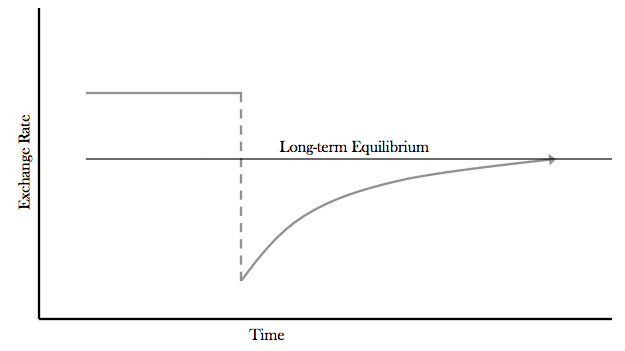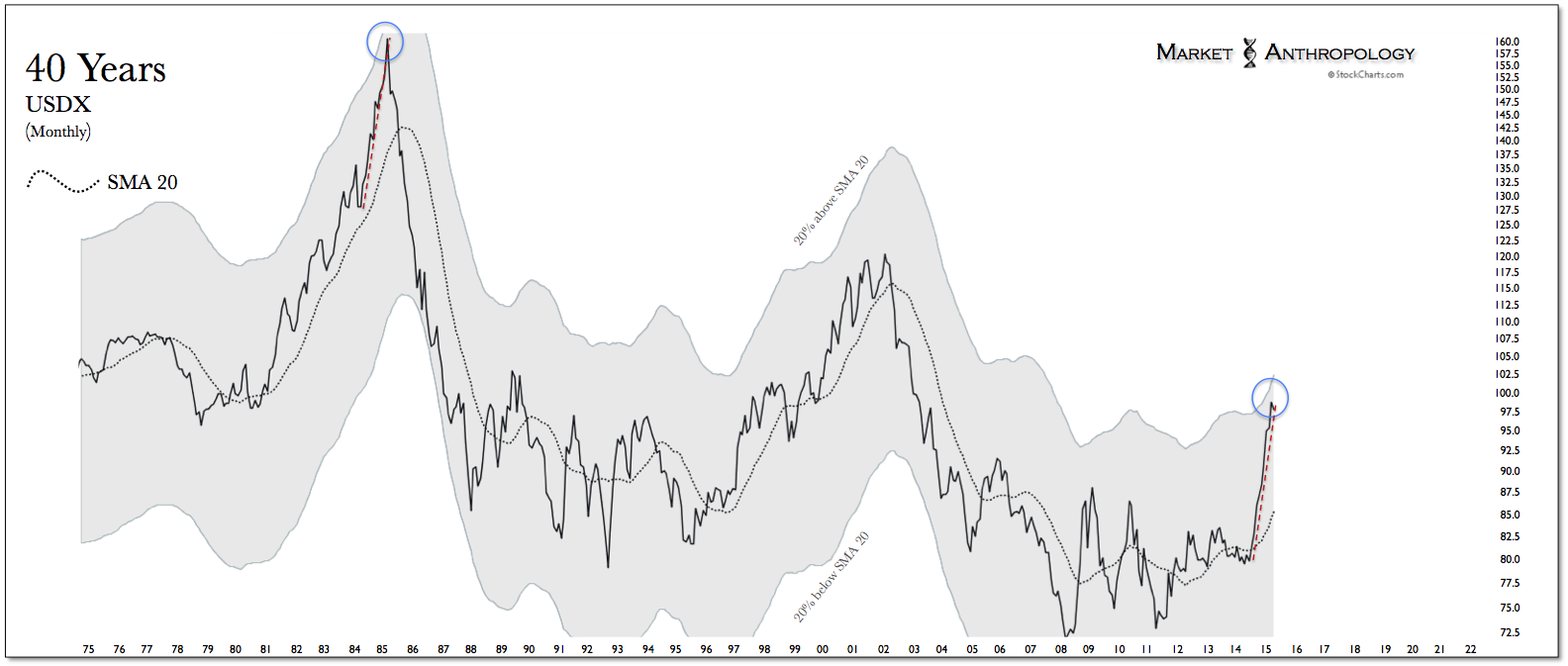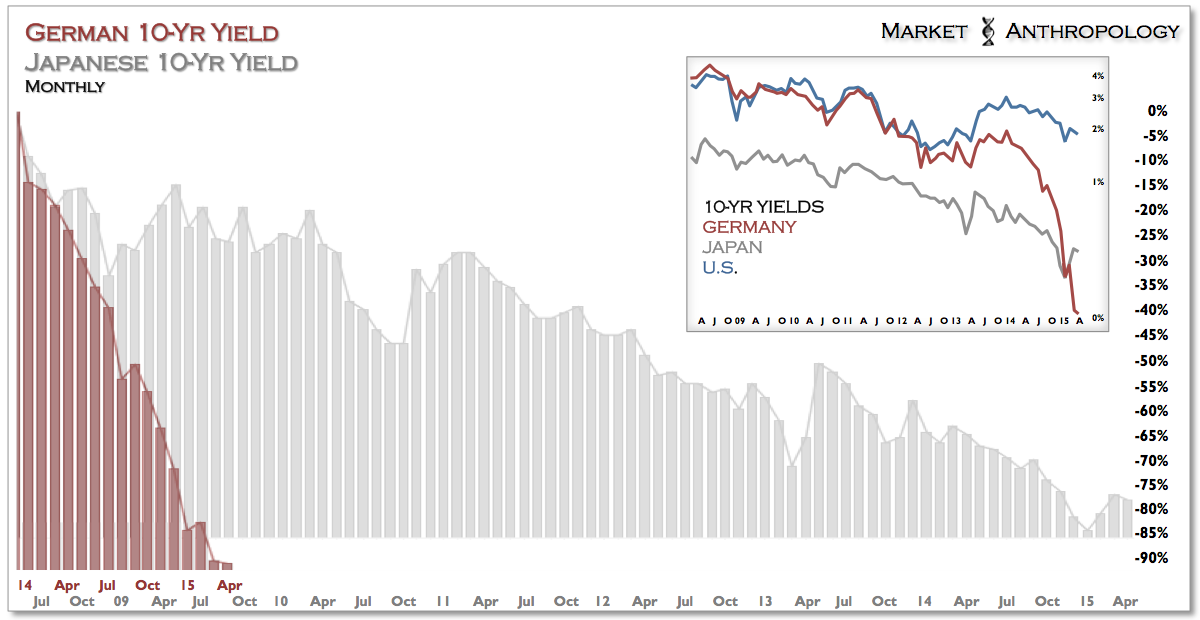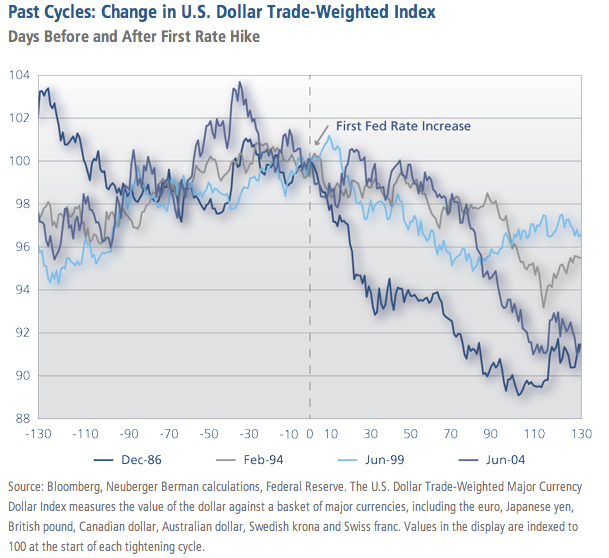While we don't exactly subscribe to an Ignorance is Bliss methodology that some of our more technical brethren might apply, if you adopt a purely fundamental perspective or bias in the market, you certainly run the risk of finding yourself several steps ahead - or behind - of where the rubber meets the road.
When it comes to the currency markets this is especially true.
Simply put, prices on Wall Street move much faster than prices on Main Street.
If this wasn't quite the case, economists market opinions would likely be held in much higher esteem by participants who know all too well the profound disconnect that exists between the two perspectives - and which are greatly muddled these days by the many active hands and mouth pieces of the world's major central banks.

As the venerable late German economist Rudi Dornbusch theorized in his ground breaking exchange rate overshooting hypothesis, goods' prices are sticky - or slow to change in the short run, while prices of currencies are flexible. This factor differential often causes exchange rates to overshoot and compensate for an exogenous shift in market conditions or monetary policy, that in the longer-run will move antithetic to short-term induced currency flows and behavioral reflexes.
"According to the model, when a change in monetary policy occurs (e.g., an unanticipated permanent increase in the money supply), the market will adjust to a new equilibrium between prices and quantities. Initially, because of the "stickiness" of prices of goods, the new short run equilibrium level will first be achieved through shifts in financial market prices. Then, gradually, as prices of goods "unstick" and shift to the new equilibrium, the foreign exchange market continuously reprices, approaching its new long-term equilibrium level. Only after this process has run its course will a new long-run equilibrium be attained in the domestic money market, the currency exchange market, and the goods market.
As a result, the foreign exchange market will initially overreact to a monetary change, achieving a new short run equilibrium. Over time, goods prices will eventually respond, allowing the foreign exchange market to dissipate its overreaction, and the economy to reach the new long run equilibrium in all markets." - Exchange Rate Overshooting Hypothesis - Wikipedia
When it comes to the the euro dollar exchange rate over the past year, we have witnessed this pronounced reaction, which has not only been motivated by the significant actions on the part of the ECB, but as well as expectations to varying degrees that the Fed will need to raise interest rates, at the very least - before the ECB begins to tighten. The net effect in the currency markets delivered an unprecedented 9 month rally in the U.S. dollar index - and a cascade in the euro that caused the currency to fall back to levels last seen at the start of 2003.
From a longer-term fundamental perspective of what primarily drives an exchange rate - namely inflation, the significant differential that exists today between the U.S. and Europe - should ultimately portend that the euro will strengthen over the dollar in the long-term, as stronger U.S. inflation rates at home should weaken the dollar. Generally speaking, a country with higher inflation typically sees their currency depreciate relative to their trading partners, as competitive conditions are compensated and a longer-term equilibrium is established in the market. Conversely, a country with lower inflation is reflected with a strengthening currency, as its purchasing power increases relative to other currencies.
What Dornbush's model simply represented was the actual road that markets more typically traveled on their way back to a long-term equilibrium, after shifts were made in monetary policy that most economists at that time (1976) more likely approached from an efficient market theory perspective. Today, throw in a dash or heaping spoonful of Soros's reflexivity and the active and visible hand(s) of our monetary stewards - and that cliff in the road can ironically extend well below the rational expectations of most (ourselves included).
Adding significant fuel to the fire over the past year has been expectations in the market that the Fed will need to begin raising rates, with most participants relying on recent Fed tightening cycles for comparative market contours and guidance. Similar to the compensation in the currency markets from the ECB's crawl towards QE over the past year, the expectation that stronger U.S. growth will, at the very least, require the Fed to raise interest rates before the ECB - made dollar assets extremely attractive and focused capital flows, further motivating the overshot that nearly delivered parity in the euro dollar exchange rate from around 1.40 last May.
Although we continue to believe that it's grossly misguided (see here) to expect a similar magnitude tightening regime from ZIRP as there was in recent (~past thirty years) cycles, the drawn out nature of the Fed's now painfully transparent march/stumble towards normalizing monetary policy, has provided an enormous window for participants to build flows and expectations in. While we believe their bark is much bigger than their bite when it comes to actually tightening, the dollar has followed - as it has in the past (and as Dornbush's model would imply), in over-compensating with strength during this prolonged and relatively esoteric expectation phase.
What happens to the dollar when the Fed actually begins to tighten? If past is prologue - and which we expect will ultimately be a significantly less aggressive tightening/normalizing cycle (but obviously still enacted relative to the extremely low inflation rates within Europe) - the dollar should depreciate as long-term equilibrium is re-established, which reflects the inflation premium present in the U.S. As shown in the Figure from Neuberger Berman, above, the dollar has strengthened in the previous four cycles during the expectation phase of tightening and typically begins to weaken even before the first rate hike is made by the Fed.
For traders, this dynamic is commonly described as buy the rumor - sell the news. However, these days, with the expectations of tightening beginning to modulate with U.S. economic growth, we think the reality may become: buy the hype - sell the bluff.
All things considered - and as we described in recent notes, the concentrated flows and behavioral biases taken up over the past year in the respective trends of the euro and dollar, have pushed the U.S. dollar index to a relative performance extreme, arguably last witnessed at the secular peak in the index in February 1985. In our opinion, despite the retracement rally in the U.S. dollar index this week, the extreme overshot in the euro dollar exchange rate may now be in the markets rearview mirror, which should go a long way in engendering a rising tide in inflation expectations, as the markets work their way back to a longer-term equilibrium.

From our perspective, assets positively impacted by rising inflation expectations, such as precious metals and oil, should outperform, with retracement declines susceptible in the government bond markets. With German 10-Year bunds yielding less than 0.2 percent - while Germany's core CPI is expected to come in ~ 1.1% this year - it seems safe to speculate that the move in bunds has also lived up to expectations of Dornbush's overshooting model.
The same could be said about oil, although you would be hard-pressed to read as much in the financial media, which has continued to gravitate towards the fundamental supply side of that story, rather than the inherent denominating calculus in the currency markets that appears far more consequential to the price of oil today.
In either example, both German bunds and oil have witnessed market extremes (scarcity and oversupply) affected by the same overshooting dynamic, that we suspect will be normalized over the course of this year, as both assets work their way back to a longer-term equilibrium.
Consider:
“If the ECB needs to execute the full program, it is going to be challenging if it stays like this,” said Elie El Hayek, global head of rates and credit trading at HSBC. "There are not enough long-term bonds unless there is a short-term selloff" -- ECB Bond-Buying Program Could Hinge on German Debt Supply ~WSJ 3/30/15
and:
We don't have much room left, but we're still answering the phones" says Mike Moeller, who manages
the company’s Cushing tank farm. “Not everybody who calls is going to get space.”-- Oil Storage Squeeze May Lead to Another Price Crash ~ Bloomberg 3/12/15
Just how extreme was the move in yields in Europe? What took Japan over six years to accomplish, Germany exceeded in 16 months. Market fundamentals were significantly overruled and overshot by profound shifts in monetary policy. Despite the conventional market wisdom now built around these relatively short-term moves, like Dornbush's model would suggest, we expect these assets to rebound/retrace back to their new long-term equilibriums. In the case of the euro dollar exchange rate, oil and German 10-year yields this is likely substantially higher than current market conditions reflect.


